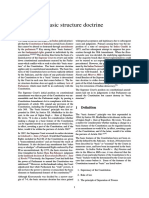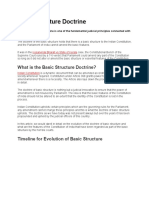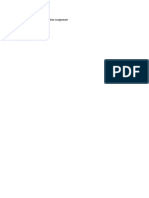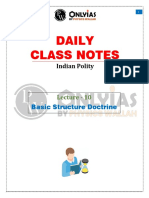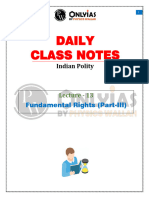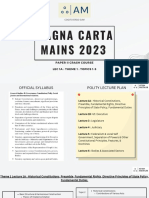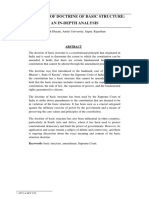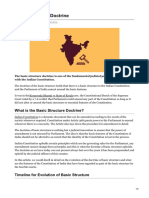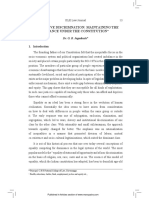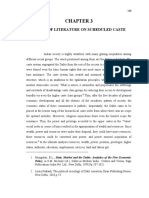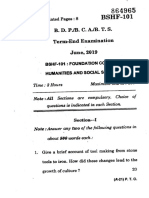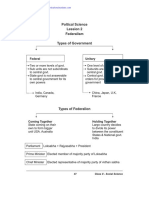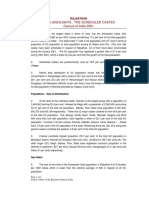0% found this document useful (0 votes)
4 views20 pagesLecture 5 Class Notes
The document discusses the nature and interpretation of Fundamental Rights in India, particularly focusing on Articles 14, 15, and 16, and the concept of the Basic Structure doctrine established by the Supreme Court. It outlines key cases that shaped the understanding of these rights, including the Keshavananda Bharati case, which determined that while the Constitution can be amended, its basic structure cannot be altered. Additionally, it details the categories of rights, the prohibition of discrimination, and the current status of reservations in India.
Uploaded by
ABHIKINCopyright
© © All Rights Reserved
We take content rights seriously. If you suspect this is your content, claim it here.
Available Formats
Download as PDF, TXT or read online on Scribd
0% found this document useful (0 votes)
4 views20 pagesLecture 5 Class Notes
The document discusses the nature and interpretation of Fundamental Rights in India, particularly focusing on Articles 14, 15, and 16, and the concept of the Basic Structure doctrine established by the Supreme Court. It outlines key cases that shaped the understanding of these rights, including the Keshavananda Bharati case, which determined that while the Constitution can be amended, its basic structure cannot be altered. Additionally, it details the categories of rights, the prohibition of discrimination, and the current status of reservations in India.
Uploaded by
ABHIKINCopyright
© © All Rights Reserved
We take content rights seriously. If you suspect this is your content, claim it here.
Available Formats
Download as PDF, TXT or read online on Scribd
/ 20

